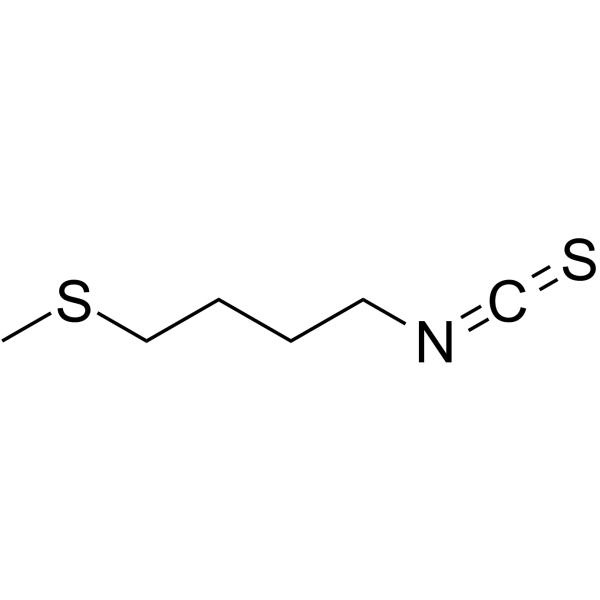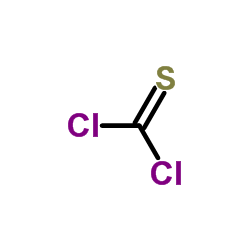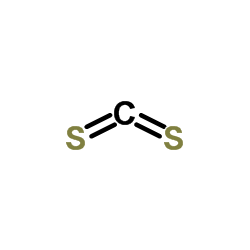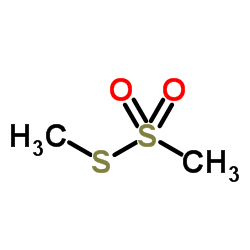4478-93-7
| Name | sulforaphane |
|---|---|
| Synonyms |
UNII:41684WL1GL
1-isothiocyanato-4-methylsulfinylbutane MFCD00198068 1-Isothiocyanato-4-(methylsulfinyl)butane SULFORAPHANE, (±)- 4-Isothiocyanatobutyl methyl sulfoxide 4-Methylsulfinylbutyl isothiocyanate 1-Isothiocyanato-4-[(R)-methylsulfinyl]butane 4-(Methylsulfinyl)butyl isothiocyanate 1-Isothiocyanato-4-(methylsulfinyl)-butane Butane, 1-isothiocyanato-4-[(R)-(1R)-methylsulfinyl]- Butane, 1-isothiocyanato-4-(methylsulfinyl)- (R)-sulforaphane DL-Sulforaphane (R)-1-isothiocyanato-4-(methylsulfinyl)butane Sulforaphane (-)-Sulforaphane L-Sulforaphane 4-isothiocyanatobutyl methyl (R)-sulfoxide (R)-1-Isothiocyanato-4-(methylsulfinyl)butane,4-Methylsulfinylbutyl isothiocyanate D,L-Sulforaphane SCN4SO&1 Sulforafan |
| Description | Sulforaphane is an isothiocyanate present naturally in widely consumed vegetables; has shown anticancer and cardioprotective activities. |
|---|---|
| Related Catalog | |
| Target |
HDAC |
| In Vitro | Sulforaphane induces a cell cycle arrest in a dose-dependent manner, followed by cell death. This sulforaphane-induced cell cycle arrest was correlated with an increased expression of cyclins A and B1. Sulforaphane induces cell death via an apoptotic process. Sulforaphane inhibits the reinitiation of growth and diminishes cellular viability in quiescent colon carcinoma cells (HT29) and has a lower toxicity on differentiated CaCo2 cells[1]. Pre-treatment of H9c2 rat myoblasts with sulforaphane decreases the apoptotic cell number and the expression of pro-apoptotic proteins (Bax, caspase-3 and cytochrome c), as well as the doxorubicin-induced increase in mitochondrial membrane potential. Furthermore, sulforaphane increases the mRNA and protein expression of heme oxygenase-1, which consequently reduces the levels of reactive oxygen species (ROS, measured using MitoSOX Red reagent) in the mitochondria which are induced by doxorubicin[2]. |
| In Vivo | Sulforaphane can block the formation of ammary tumors in Sprague-Dawley rats treated with single doses of 9,10-dimethyl-1,2-benzanthracene. Administration of sulforaphane reduces the incidence, multiplicity, and weights and delays the development of the mammary tumors evoked by a single dose of DMBA in female Sprague-Dawley rats[3]. |
| Cell Assay | HT29 cells are seeded at low density (5×104 cells/mL) in 35- or 120-mm diameter Primaria dishes in standard medium containing 5% FCS. One day after seeding, medium is changed, and HT29 cells are treated with sulforaphane (0-30 μM). An equivalent amount of the solvent (ethanol) is added to control cells (0.2% final concentration). Drug effect on cellular viability is evaluated using the MTT assay[1]. |
| Animal Admin | Rats: At age 47, 48, 49, 50, and 51 days, each animal receives by gavage either 0.5 mL of Emulphor EL-620 alone or the specified doses (75, 100, or 150 μM daily) of sulforaphane or compound 2, 3, or 4 in 0.5 mL of Emulphor EL-620. On day 50, 3 hr after administration of the vehicle or protector, all rats also receive an intragastric instillation of 8.0 mg of DMBA dissolved in 1.0 mL of sesame oil. This dose of DMBA is selected to produce a substantial tumor incidence, but not one so high as to overwhelm a potential chemoprotective effect. The animals are examined once weekly for the appearance and location of palpable tumors. At age 202 days, i.e., 152 days after carcinogen administration, all animals are euthanized with ether and weighed. The tumors are separated from fat and connective tissue by dissection, weighed, and fixed in buffered 10% formalin. All tumors are identified microscopically by examination of stained sections[3]. |
| References |
| Density | 1.2±0.1 g/cm3 |
|---|---|
| Boiling Point | 368.2±25.0 °C at 760 mmHg |
| Molecular Formula | C6H11NOS2 |
| Molecular Weight | 177.288 |
| Flash Point | 176.5±23.2 °C |
| Exact Mass | 177.028198 |
| PSA | 80.73000 |
| LogP | 0.23 |
| Vapour Pressure | 0.0±0.8 mmHg at 25°C |
| Index of Refraction | 1.567 |
| Storage condition | −20°C |
| Water Solubility | DMSO: 40 mg/mL, soluble |
|
SECTION 1: Identification of the substance/mixture and of the company/undertaking Product identifiers Product name: DL-Sulforaphane REACH No.: A registration number is not available for this substance as the substance or its uses are exempted from registration, the annual tonnage does not require a registration or the registration is envisaged for a later registration deadline.
CAS-No.: 4478-93-7 Relevant identified uses of the substance or mixture and uses advised against Identified uses: Laboratory chemicals, Manufacture of substances SECTION 2: Hazards identification Classification of the substance or mixture Not a hazardous substance or mixture according to Regulation (EC) No. 1272/2008. This substance is not classified as dangerous according to Directive 67/548/EEC. Label elements This substance is not classified as dangerous according to Directive 67/548/EEC. Other hazards - none SECTION 3: Composition/information on ingredients Substances Synonyms: 1-Isothiocyanato-4-(methylsulfinyl)-butane Formula: C6H11NOS2 Molecular Weight: 177,29 g/mol CAS-No.: 4478-93-7 No components need to be disclosed according to the applicable regulations. SECTION 4: First aid measures Description of first aid measures If inhaled If breathed in, move person into fresh air. If not breathing, give artificial respiration. In case of skin contact Wash off with soap and plenty of water. In case of eye contact Flush eyes with water as a precaution. If swallowed Never give anything by mouth to an unconscious person. Rinse mouth with water. Most important symptoms and effects, both acute and delayed The most important known symptoms and effects are described in the labelling (see section 2.2) and/or in section 11 Indication of any immediate medical attention and special treatment needed no data available SECTION 5: Firefighting measures Extinguishing media Suitable extinguishing media Use water spray, alcohol-resistant foam, dry chemical or carbon dioxide. Special hazards arising from the substance or mixture Carbon oxides, nitrogen oxides (NOx), Sulphur oxides Advice for firefighters Wear self contained breathing apparatus for fire fighting if necessary. Further information no data available SECTION 6: Accidental release measures Personal precautions, protective equipment and emergency procedures Avoid breathing vapours, mist or gas. For personal protection see section 8. Environmental precautions Do not let product enter drains. Methods and materials for containment and cleaning up Keep in suitable, closed containers for disposal. Reference to other sections For disposal see section 13. SECTION 7: Handling and storage Precautions for safe handling Normal measures for preventive fire protection. For precautions see section 2.2. Conditions for safe storage, including any incompatibilities Store in cool place. Keep container tightly closed in a dry and well-ventilated place. Containers which are opened must be carefully resealed and kept upright to prevent leakage. Recommended storage temperature: -20 °C Specific end use(s) A part from the uses mentioned in section 1.2 no other specific uses are stipulated SECTION 8: Exposure controls/personal protection Control parameters Components with workplace control parameters Exposure controls Appropriate engineering controls General industrial hygiene practice. Personal protective equipment Eye/face protection Use equipment for eye protection tested and approved under appropriate government standards such as NIOSH (US) or EN 166(EU). Skin protection Handle with gloves. Gloves must be inspected prior to use. Use proper glove removal technique (without touching glove's outer surface) to avoid skin contact with this product. Dispose of contaminated gloves after use in accordance with applicable laws and good laboratory practices. Wash and dry hands. The selected protective gloves have to satisfy the specifications of EU Directive 89/686/EEC and the standard EN 374 derived from it. Body Protection impervious clothing, The type of protective equipment must be selected according to the concentration and amount of the dangerous substance at the specific workplace. Respiratory protection Respiratory protection not required. For nuisance exposures use type OV/AG (US) or type ABEK (EU EN 14387) respirator cartridges. Use respirators and components tested and approved under appropriate government standards such as NIOSH (US) or CEN (EU). Control of environmental exposure Do not let product enter drains. SECTION 9: Physical and chemical properties Information on basic physical and chemical properties a) AppearanceForm: liquid b) Odourno data available c) Odour Thresholdno data available d) pHno data available e) Melting point/freezingno data available point f) Initial boiling point and no data available boiling range g) Flash pointno data available h) Evapouration rateno data available i) Flammability (solid, gas) no data available j) Upper/lowerno data available flammability or explosive limits k) Vapour pressureno data available l) Vapour densityno data available m) Relative densityno data available n) Water solubilityno data available o) Partition coefficient: n- no data available octanol/water p) Auto-ignitionno data available temperature q) Decompositionno data available temperature r) Viscosityno data available s) Explosive propertiesno data available t) Oxidizing propertiesno data available Other safety information no data available SECTION 10: Stability and reactivity Reactivity no data available Chemical stability Stable under recommended storage conditions. Possibility of hazardous reactions no data available Conditions to avoid no data available Incompatible materials Strong acids, Strong bases Hazardous decomposition products Other decomposition products - no data available In the event of fire: see section 5 SECTION 11: Toxicological information Information on toxicological effects Acute toxicity no data available Skin corrosion/irritation no data available Serious eye damage/eye irritation no data available Respiratory or skin sensitisation no data available Germ cell mutagenicity no data available Carcinogenicity IARC:No component of this product present at levels greater than or equal to 0.1% is identified as probable, possible or confirmed human carcinogen by IARC. Reproductive toxicity no data available Specific target organ toxicity - single exposure no data available Specific target organ toxicity - repeated exposure no data available Aspiration hazard no data available Additional Information RTECS: Not available To the best of our knowledge, the chemical, physical, and toxicological properties have not been thoroughly investigated. SECTION 12: Ecological information Toxicity no data available Persistence and degradability no data available Bioaccumulative potential no data available Mobility in soil no data available Results of PBT and vPvB assessment PBT/vPvB assessment not available as chemical safety assessment not required/not conducted Other adverse effects no data available SECTION 13: Disposal considerations Waste treatment methods Product Offer surplus and non-recyclable solutions to a licensed disposal company. Contaminated packaging Dispose of as unused product. SECTION 14: Transport information UN number ADR/RID: -IMDG: -IATA: - UN proper shipping name ADR/RID: Not dangerous goods IMDG: Not dangerous goods IATA:Not dangerous goods Transport hazard class(es) ADR/RID: -IMDG: -IATA: - Packaging group ADR/RID: -IMDG: -IATA: - Environmental hazards ADR/RID: noIMDG Marine pollutant: noIATA: no Special precautions for user no data available SECTION 15: Regulatory information This safety datasheet complies with the requirements of Regulation (EC) No. 1907/2006. Safety, health and environmental regulations/legislation specific for the substance or mixture no data available Chemical Safety Assessment For this product a chemical safety assessment was not carried out SECTION 16: Other information Further information Copyright 2013 Co. LLC. License granted to make unlimited paper copies for internal use only. The above information is believed to be correct but does not purport to be all inclusive and shall be used only as a guide. The information in this document is based on the present state of our knowledge and is applicable to the product with regard to appropriate safety precautions. It does not represent any guarantee of the properties of the product. Corporation and its Affiliates shall not be held liable for any damage resulting from handling or from contact with the above product. See and/or the reverse side of invoice or packing slip for additional terms and conditions of sale. |
| Personal Protective Equipment | Eyeshields;Gloves;half-mask respirator (US);multi-purpose combination respirator cartridge (US) |
|---|---|
| Hazard Codes | Xn |
| Safety Phrases | S23-S24/25 |
| RIDADR | NONH for all modes of transport |
| WGK Germany | 3 |
| HS Code | 2930909090 |
|
~99% 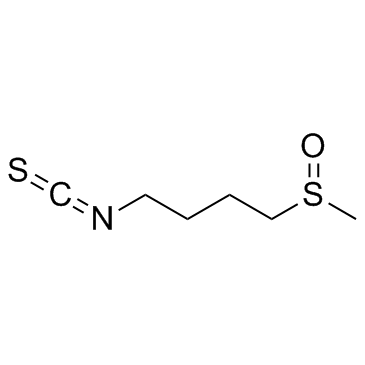
4478-93-7 |
| Literature: Papi, Alessio; Orlandi, Marina; Bartolini, Giovanna; Barillari, Jessica; Iori, Renato; Paolini, Moreno; Ferroni, Fiammetta; Fumo, Maria Grazia; Pedulli, Gian Franco; Valgimigli, Luca Journal of Agricultural and Food Chemistry, 2008 , vol. 56, # 3 p. 875 - 883 |
|
~83% 
4478-93-7 |
| Literature: PharmAgra Labs, Inc. Patent: US2008/176942 A1, 2008 ; Location in patent: Page/Page column 8-9 ; |
|
~79% 
4478-93-7 |
| Literature: Auriga International; Dubois, Jacques; Marchal, Alfred; Lacroix, Damien; Cabou, Jérôme Patent: US2013/142739 A1, 2013 ; Location in patent: Paragraph 0129-0147 ; |
|
~% 
4478-93-7 |
| Literature: Jean, Daniel; Rabhi, Cherif; Schwaab, Veronique Patent: US2006/135618 A1, 2006 ; Location in patent: Page/Page column 4 ; |
|
~% 
4478-93-7 |
| Literature: Moon, Joon-Kwan; Kim, Jun-Ran; Ahn, Young-Joon; Shibamoto, Takayuki Journal of Agricultural and Food Chemistry, 2010 , vol. 58, # 11 p. 6672 - 6677 |
|
~% 
4478-93-7 |
| Literature: Rajski, Scott R.; Mays, Jared Rae Patent: US2013/116203 A1, 2013 ; |
|
~% 
4478-93-7 |
| Literature: Auriga International; Dubois, Jacques; Marchal, Alfred; Lacroix, Damien; Cabou, Jérôme Patent: US2013/142739 A1, 2013 ; |
|
~% 
4478-93-7 |
| Literature: Chen, Xin; Li, Zhengyi; Sun, Xiaoqiang; Ma, Hongzhao; Chen, Xiaoxin; Ren, Jie; Hu, Kun Synthesis, 2011 , # 24 art. no. F82411SS, p. 3991 - 3996 |
|
~% 
4478-93-7 |
| Literature: Papi, Alessio; Orlandi, Marina; Bartolini, Giovanna; Barillari, Jessica; Iori, Renato; Paolini, Moreno; Ferroni, Fiammetta; Fumo, Maria Grazia; Pedulli, Gian Franco; Valgimigli, Luca Journal of Agricultural and Food Chemistry, 2008 , vol. 56, # 3 p. 875 - 883 |
| Precursor 9 | |
|---|---|
| DownStream 5 | |
| HS Code | 2930909090 |
|---|---|
| Summary | 2930909090. other organo-sulphur compounds. VAT:17.0%. Tax rebate rate:13.0%. . MFN tariff:6.5%. General tariff:30.0% |

